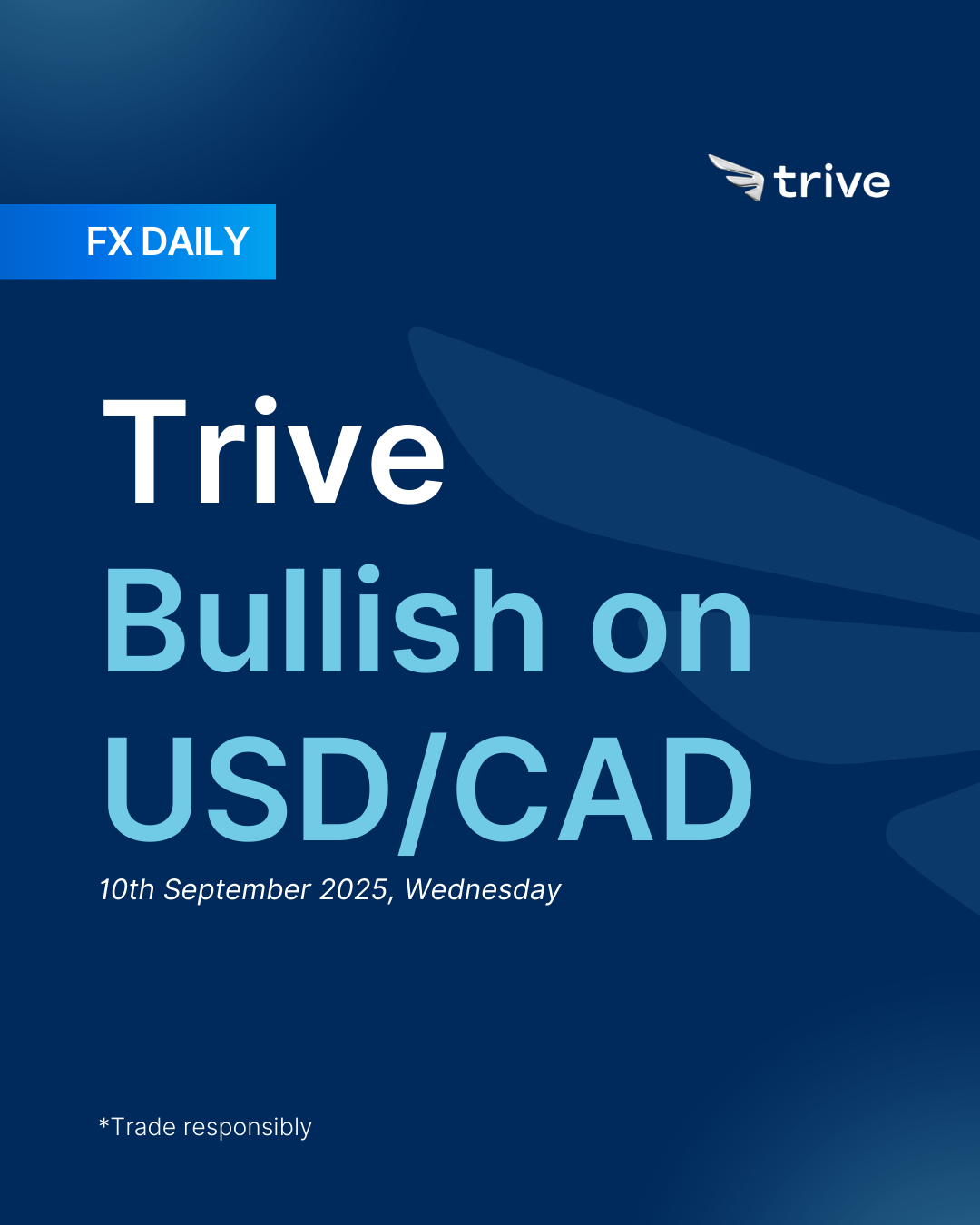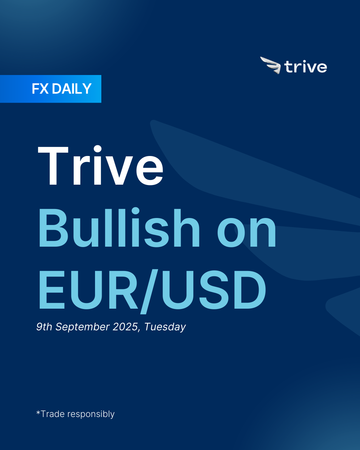FX Daily: Trive Bullish on USD/CAD

The loonie lagged peers as weak jobs (-65.5k, jobless rate 7.1%), soft trade, and falling oil fueled BoC cut bets (96% for September). While USD weakness capped upside, Canada’s deteriorating outlook leaves the CAD vulnerable. With BoC dovish bias against Fed policy uncertainty, we stay bullish USD/CAD, favoring buy-on-dip strategies.
CAD: Another cut expected
The Canadian Dollar spent the week under pressure, caught between a wave of weak domestic economic data and the powerful external downdraft from the collapsing US dollar. The loonie underperformed its G10 peers as a steady stream of disappointing Canadian reports weighed on sentiment, culminating in a disastrous August jobs release on Friday that cemented expectations for an imminent Bank of Canada rate cut. Falling crude oil prices added further strain. However, the loonie was spared a complete breakdown by the even sharper deterioration in the US labor market narrative, which drove the US dollar lower on Friday and helped prevent a major breakout in USD/CAD. By the week’s end, the Canadian dollar was only marginally firmer against the greenback, marking a clear case of relative underperformance.
The week’s main event was the shockingly weak August Labour Force Survey. Canada lost 65.5k jobs compared to expectations for a 10k gain, while the unemployment rate rose more than expected to 7.1% from 6.9%. The losses were concentrated in part-time positions, but the headline confirmed a sharp cooling in the labor market. This report followed other disappointing figures, including Q2 labor productivity, which fell 1.0% in its sharpest decline since late 2022. The July merchandise trade deficit came in wider than forecast at C$4.94 billion, and the August manufacturing PMI, though slightly improved, remained in contraction for a seventh straight month at 48.3.
The Bank of Canada outlook shifted decisively in response. Rate cut bets surged after Friday’s jobs report, with markets increasing the probability of a 25 basis point cut at the September meeting from around 71% to 96%. This dovish repricing built on the BoC’s latest meeting minutes, which had already highlighted concern over rising unemployment, concerns that were fully realized in the data.
External pressures added to the loonie’s struggles. Oil prices fell sharply in the second half of the week after reports suggested Saudi Arabia and OPEC+ might speed up production increases, a bearish development for Canada’s commodity-linked currency. Yet, the loonie avoided a larger sell-off because of the collapse in the US dollar. The weaker Canadian data pulled USD/CAD higher, but the shockingly poor US jobs numbers sparked such a dramatic sell-off in the dollar that the pair’s upside was capped.
On the fiscal front, Prime Minister Carney confirmed that the October federal budget will prioritize spending restraint, with government departments instructed to prepare for significant cuts in the coming years. This commitment to austerity adds another layer of tightening to an economy already showing signs of strain.
Near term, our bias is bearish. Domestic drivers have turned decisively softer as rising unemployment, weak PMIs, wider external deficits, and heavy BoC easing expectations weigh on front end yields and overall financial conditions. Externally, falling oil erodes terms of trade while a softer US dollar limits but does not reverse the pressure, so we prefer selling strength rather. We would dial this down if CPI and wages firm in sequence, PMIs move back toward expansion, sovereign or credit spreads stay calm, oil stabilizes, and US data weakness broadens enough to compress US Canada rate differentials further.
Longer term, our bias is neutral. The domestic pulse argues for easier policy and subdued growth, but if the Federal Reserve eases more and the dollar trends lower, relative rate differentials could narrow in Canada’s favor and oil finding a floor would help the balance of payments. In that mix we would be selective, buying pullbacks only when risk appetite is steady and front end pricing shows the BoC nearing a pause rather than extending the cycle. We would lean more positive on a run of firmer labor and core inflation, a turn higher in manufacturing and services PMIs, narrower trade gaps, and clearer signals that external demand for Canadian exports is stabilizing.
If the driver mix flips meaningfully or if policy guidance shifts more dovishly than expected, we will reconsider and lean toward a weaker currency until the data and pricing improve.
USD: 25bp cut is fully priced in
The US Dollar ended the week sharply lower, driven by a consistent and intensifying narrative of a cooling labor market in the United States. The DXY started the week on mixed ground, finding some support from a global risk-off move caused by surging bond yields. However, the focus quickly shifted to domestic economic conditions. A series of weak labor market reports, beginning with Wednesday’s disappointing JOLTS data and followed by Thursday’s surprisingly low ADP employment figures, set a bearish tone. This narrative culminated on Friday with a disastrous August Non-Farm Payrolls report. The headline figure of only 22k jobs shattered expectations, confirmed a rapid slowdown in hiring, and pushed the dollar to a weekly low below 97.55. This outcome led to a significant dovish repricing of Federal Reserve expectations, with markets aggressively pricing in multiple rate cuts by the end of the year, capping a week where recession fears firmly took hold.
The dollar’s sell-off was primarily driven by collapsing labor market data. It began with July JOLTS Job Openings, which fell to 7.181 million compared to the expected 7.378 million. The August ADP National Employment report then showed just 54k jobs added against 65k expected, while weekly initial jobless claims rose to 237k. The main event came on Friday with the August Non-Farm Payrolls, which confirmed the market’s worst fears. Payrolls grew by only 22k compared to the expected 75k, and prior months were revised down by a net 21k. The unemployment rate rose to 4.3% as forecasted, and average hourly earnings increased 3.7% year-on-year, in line with expectations. Importantly, payroll growth has now been below the estimated breakeven rate in three of the last four months.
Other economic data added to the pressure. The ISM Manufacturing PMI remained in contraction at 48.7, while the ISM Services PMI beat expectations at 52.0, showing resilience in services. However, the employment sub-component of the services report remained weak at 46.5, aligning with the broader labor market slowdown. The July international trade deficit widened sharply to -$78.3 billion, hinting at a potential drag on third-quarter GDP, while revised second-quarter unit labor costs came in softer than expected at 1.0%, which was viewed as dovish for inflation.
Federal Reserve officials also signaled a shift in tone. Governor Waller said the Fed should cut rates at the next meeting and suggested around 150 basis points of cuts would be needed to reach a neutral policy stance. Musalem noted he had marked up labor market risks and marked down inflation risks, while New York Fed President Williams acknowledged the Fed’s focus had tilted more towards its employment mandate. Markets aggressively repriced Fed expectations following the weak payrolls, fully pricing in a 25 basis point cut for the September 17 meeting. By the end of the week, markets were pricing around 70 basis points of total easing by year-end, implying a high probability of three cuts in 2025. Adding to the uncertainty, reports emerged that the Justice Department had opened a criminal investigation into Fed Governor Cook regarding mortgage fraud, creating another layer of political risk for the central bank.
In trade and geopolitics, a US Appeals Court ruled that the majority of President Trump’s tariffs were illegal. Although the tariffs remain in place pending a Supreme Court appeal, the ruling creates long-term fiscal uncertainty as it raises the possibility of refunding collected duties. President Trump also signed an executive order lowering tariffs on Japanese auto imports, easing tensions with Japan. Meanwhile, the US Commerce Department revoked TSMC’s waiver for shipments of chip supplies to China, escalating the ongoing technology rivalry.
Market sentiment shifted notably during the week. It began with global risk aversion, sparked by surging bond yields, including UK 30-year yields hitting a 27-year high. Initially, the dollar benefited from safe-haven flows, but once the weak US data took center stage, the narrative shifted to a US-specific slowdown. Friday’s disastrous jobs report cemented this shift, removing doubts and reinforcing the view that the labor market is deteriorating rapidly. This triggered a broad move across markets, with bond yields and the dollar falling sharply while rate cut expectations surged.
Near term, we hold a clear bearish US dollar stance and continue to sell strength, because a run of softer labor data that started with weaker job openings and ADP, moved through higher jobless claims, and ended with a very small payroll gain has pushed the Fed’s focus toward employment and made a September cut feel like the base case rather than a debate, which in turn keeps front end yields heavy and makes any bounce in the dollar hard to sustain for long. The macro mix around that story still leans the same way, since manufacturing remains in contraction while services holds up but shows weak hiring, unit labor costs eased rather than accelerated, and the trade deficit widened in a way that argues for slower growth, so taken together the data and the Fed’s tone reinforce an easing path that favors fading dollar rallies rather than chasing them higher unless the next round of CPI, wage growth, or PMIs meaningfully challenges that view and shifts rate expectations back toward a firmer stance.
Longer term, we keep a gradual dollar softening bias as interest rate differentials compress and the idea of US outperformance cools, while trade and technology policy headlines add some inflation risk at the edges but tend to weigh more on growth and business confidence, which markets still translate into easier policy at the front and a steeper curve that usually caps the upside in the currency. That setup argues for sticking with a sell the rallies approach while acknowledging that headline risk around Fed governance and trade will keep day to day swings lively, so we stay flexible on timing and sizing but keep the core view that the dollar should drift lower over the coming months unless the inflation side of the mandate reasserts itself in a sustained way.
If a short run of firmer data steadies the labor picture just as growth outside the United States cools and the Fed hints at fewer cuts than priced, the dollar could find a floor, with rebounds that last longer and pullbacks that stay shallow.
 USD/CAD 4H
USD/CAD 4H
Disclaimer
This material is provided for informational purposes only and does not constitute financial, investment, or other advice. The opinions expressed in this material are those of the author and do not necessarily reflect the views of Trive International. No opinion contained in this material constitutes a recommendation by Trive International or its author regarding any particular investment, transaction, or investment strategy. This material should not be relied upon in making any investment decision.
The information provided does not consider the individual investment objectives, financial situation, or needs of any specific investor. Investors should seek independent financial advice tailored to their individual circumstances before making any investment decisions. Trive International shall not be liable for any loss, damage, or injury arising directly or indirectly from the use of this information or from any action or decision taken as a result of using this material.
Trive International may or may not have a financial interest in the companies or securities mentioned. The value of investments may fluctuate, and investors may not get back the amount they originally invested. Past performance is not indicative of future results.
For more information about Trive International, please visit http://trive.com/int
Additional Information
Investing involves risk, including the potential loss of principal. Diversification and asset allocation strategies do not ensure a profit or guarantee against loss. The content in this material is subject to change without notice and may become outdated or inaccurate over time. Trive International does not undertake any obligation to update the information in this material.
By accessing this material, you acknowledge and agree to the terms of this disclaimer. If you do not agree with these terms, please refrain from using this information.
कोई टिप्पणी नहीं
Home
Trive
TriveHub





0 टिप्पणियाँ